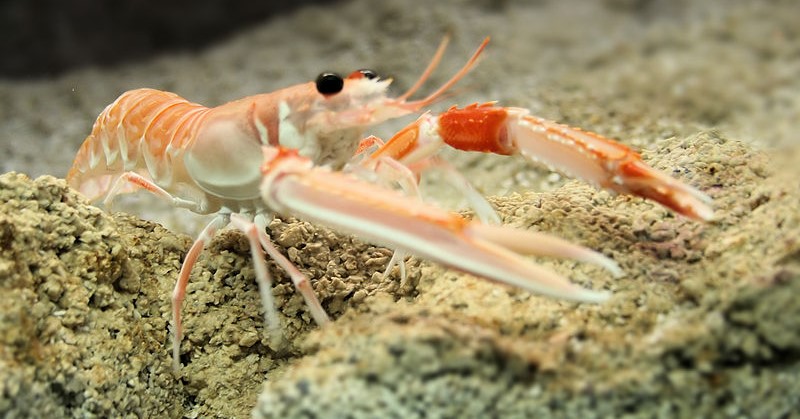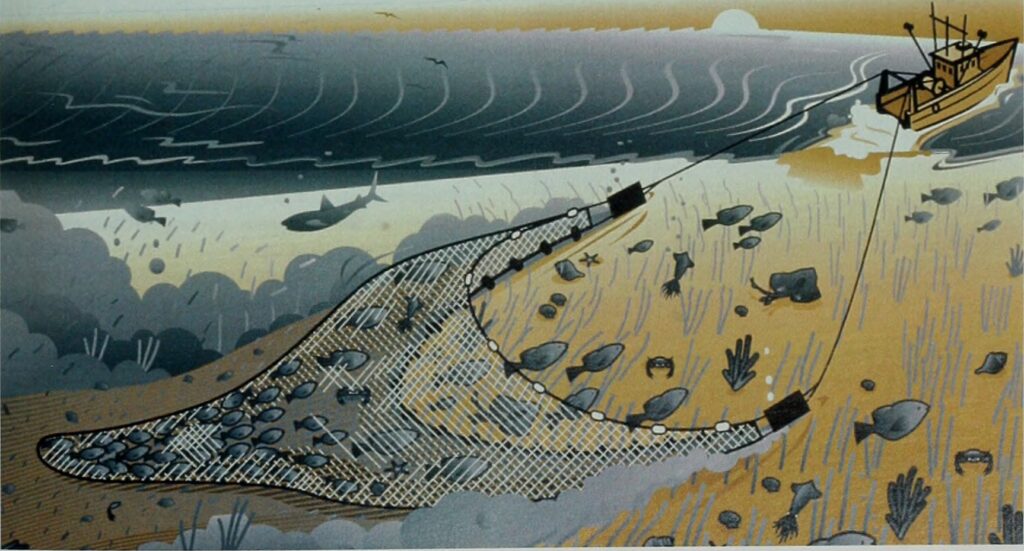M. Vigo, J. Navarro, G. Rotllant, N. Bahamon, M. Carretón, J. Quevedo, A. Rojas, J. B. Company, Before–after control–impact (BACI) assessment of the effects of a deep-water no-take fishery reserve to recover Norway lobster (Nephrops norvegicus) overfished populations and coexisting megafauna, ICES Journal of Marine Science, 2023;, fsad130, https://doi.org/10.1093/icesjms/fsad130
Lobster Fishery
Norway lobster is one of the most important species to Europe’s fishing industry. Due to intense harvesting, its populations have been severely depleted. In order to bring relief, Marine Protected Areas (MPAs) have been implemented across its range which identify important areas of conservation. This conservation strategy can restrict fishing activities through no-take fishery reserves (NTRs). This is a type of MPA that prohibits any sort of fishing activity, providing local communities a place to recover by allowing individuals to congregate and reproduce uninterrupted.

The success of these areas has been debated with a variety of results reported based on their size and regulation. A proposed solution is ongoing evaluations of these management areas by evaluating their goals and identifying if they have been met. This is done by comparing population metrics before and after implementation of an NTR. Population metrics include the number of individuals, their total weight as a population (known as biomass) and body size.
In this study, Vigo et. al. studied the effectiveness of a no-take fishery reserve on Norway lobster 4 years after its establishment in the northwestern Mediterranean Sea. The researchers hypothesized the NTR would allow Norway lobster to increase in population size, biomass and body size compared to a non-protected area.
Safe Space
After 4 years the abundance and biomass of Norway lobster increased by 60% in the NTR compared to initial measurements. On the other hand, these population metrics decreased by 80% in the non-protected area under continued fishing pressure. Larger body sizes were also found in the NTR compared to before the NTR was implemented and the non-protected area. Even after a short time period, positive changes in the Norway lobster were undeniable. Other local fish species saw similar effects as well, as their abundance and biomass similarly increased
The positive effects on both Norway lobster and local fish populations can be attributed to the type of gear used in the local fisheries. Norway lobsters are typically caught using a method called bottom trawling. This method involves a net that is dragged along the seafloor, disturbing the sediment to provoke fish to swim into its opening, trapping them. Bottom trawling is an intensive fishing practice due to its physical disturbance of the ocean floor and large bycatch rates. Bycatch refers to species caught that are not the intended target of the fishing practice. Implementing the NTR prevented this intensive disturbance to the entire habitat, not only protecting Norway lobster, but bycatch species as well.

Future Implementation?
These results promote the use of NTRs to establish safe spaces for species exposed to intensive fishing. Does this mean that fishers will lose out on catch by taking away areas they can fish? Not necessarily, as spillover from Norway lobster individuals expanding beyond the NTR were found in neighboring waters that were open to fishing. This adjacent area was also found to contain more biomass compared to the non-protected area.
Unregulated fishing can collapse important marine populations in order to enjoy short term gains. No-take fishery reserves not only establish an important congregation site for individuals, but also allow fishers to continue harvesting in a sustainable manner outside its borders.
I am a recent MSc graduate in marine biology from Bangor University, where I studied population dynamics of elasmobranchs off the coast of Wales. My interests lie in ecological data analysis to understand environmental processes and identify natural patterns. However, nothing beats being in the field and interacting directly with the marine life.
